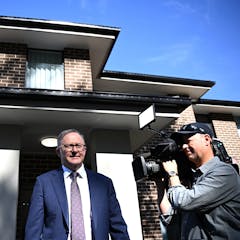
Articles on Public housing
Displaying 1 - 20 of 114 articles

Our research shows decisions on the fate of public housing towers that are based on a proper process of considering all the evidence could go either way: demolish and rebuild, or retrofit.

Amid a housing affordability crisis, new research suggests the federal government should allocate resources to the housing needs of children being raised by single mothers.

People wait years for social housing. In before-and-after interviews, the fortunate ones who were placed in secure, affordable housing describe the profound difference it has made in their lives.

Alan Kohler’s Quarterly Essay lays out how the policies of successive governments have not only failed to address housing problems, but actively created them.

A major factor driving our housing crisis is a shift toward corporate-owned buildings. Today’s guest, Prof. Nemoy Lewis, explains how we got here.

The thinking behind the state government’s ambitious housing plan is simple - build more homes and they’ll be more affordable.

People on the general waiting list can wait a decade to be housed. Even those on the priority list may wait years. Asked how the wait affects them, their responses reveal devastating impacts.

Cities are where solutions are found – but also where perils are amplified when we fail to act.

Ethiopia’s mass housing project has built and transferred half-a-million houses in two decades – but it’s damaging the social fabric of communities.

There are no ‘silver bullet’ solutions to a crisis that has left both renters and owners struggling. Only a comprehensive package of bold policies can ensure all Australians are securely housed.

Rent assistance can ease rental stress, but it won’t help low-income earners find secure and affordable housing when it’s in such short supply, nor stop disadvantage being concentrated in some areas.

Brisbane rents are up nearly 50% more than the national average and homelessness in Queensland is increasing at the fastest rate in the country. The state can take several steps to turn things around.

Why are some of the problems with housing stress and homelessness worse in New South Wales than in other states?

In a housing crisis, publicly owned land should never be sold to private developers and should instead be used to build the kind of housing the market is unwilling and unable to build.

As property values skyrocket, long-term renters — many of whom are elderly — face the very real risk of homelessness.

One social housing application assessor told us getting on the priority wait list is so challenging, some applicants abandon the process altogether.

Our new report, released today, reveals a social housing system in crisis.

HouseMate would sell homes for little more than the cost of construction, allowing the use of super for the deposit and mortgage payments.

The $10 billion fund will provide only $450 million for social housing per year, and less when markets turn down, but such funds can make financial sense.

It will cost tens of billions of dollars to find and remove all the lead service lines that deliver water to US homes and schools. A public health expert explains why he sees it as money well spent.
